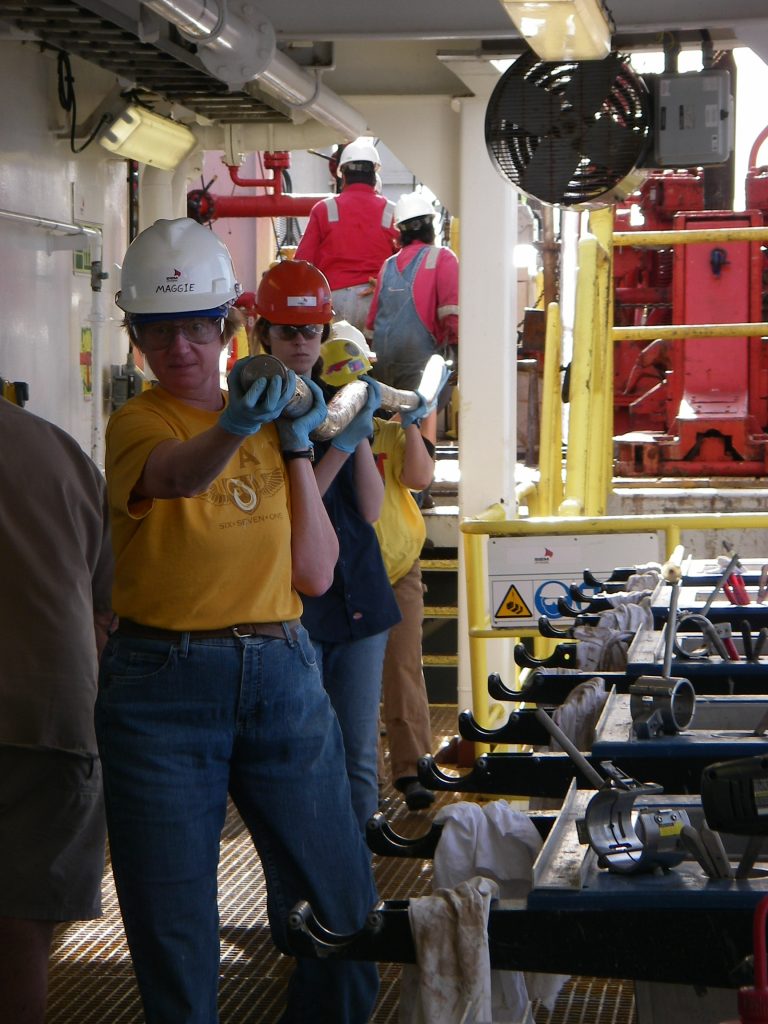
First Cores on Deck!
This post is a summary of our 3 days at our 1st sampling location closest to Montserrat where the younger deposits will be. The following are science results as summarized by 340 Staff Scientist, Nicole Stroncik.
3/6/2012 SCIENCE UPDATE: The JOIDES Resolution arrived at our 1st sampling location, Site CARI-02C at 18:00. After switching into Dynamic Positioning (DP) mode the drill team picked up the bottom hole assembly and tripped the drill string throughout the remainder of the evening. Coring operations designed to retrieve as much material as possible of the youngest debris avalanche deposit (deposit 1) created by the Soufrière- Hills volcano on Montserrat.
Pictured below are Exp 340 'ocean detectives'- sedimentologist Molly McCanta and volcanologist/sedimentologist Yoshihiko Tamura (photo credit, Takeshi Saito')
3/7/2012 SCIENCE UPDATE: The day started with a 20-minute camera survey of the seafloor at 0020hrs, which was necessary due to the rough seafloor morphology around site U1393. The main target of this site is the most recent debris avalanche deposit of Soufrière-Hills volcano on Montserrat. After finding a smooth area we tagged the seafloor at 0043hrs and started drilling hole A. We retrieved 7 cores with an average recovery rate of 11%. The cores contained mainly tephra and cut up pieces of andesite. Drilling depth 48 meters, water depth 914 meters
Pictured below is 'ocean detective' – Peter Talling, physical properties/downhole measurements specialist Exp 340 (photo credit, Adam Stinton, 340 Volcanologist)
.jpg)
3/8/2012 SCIENCE UPDATE: Drilling proceeded rather slowly, with relatively steady progress until we broke a core barrel and lost it in the hole, thus abandoning Hole A. Because of the rather unfavorable conditions for coring, trying to retrieve unconsolidated, heterogeneous material, the decision was made to move on to our 2nd location, site U1394 (CARI-03C). We reached Site at 1230 hrs, ran a camera survey of the seafloor, tagged the seafloor at 17:05 and started drilling Hole A. We retrieved 4 cores with an average recovery rate of 101%. The cores contained basaltic scoria and a mixture of variably grained volcaniclastic and biogenic sediment.
